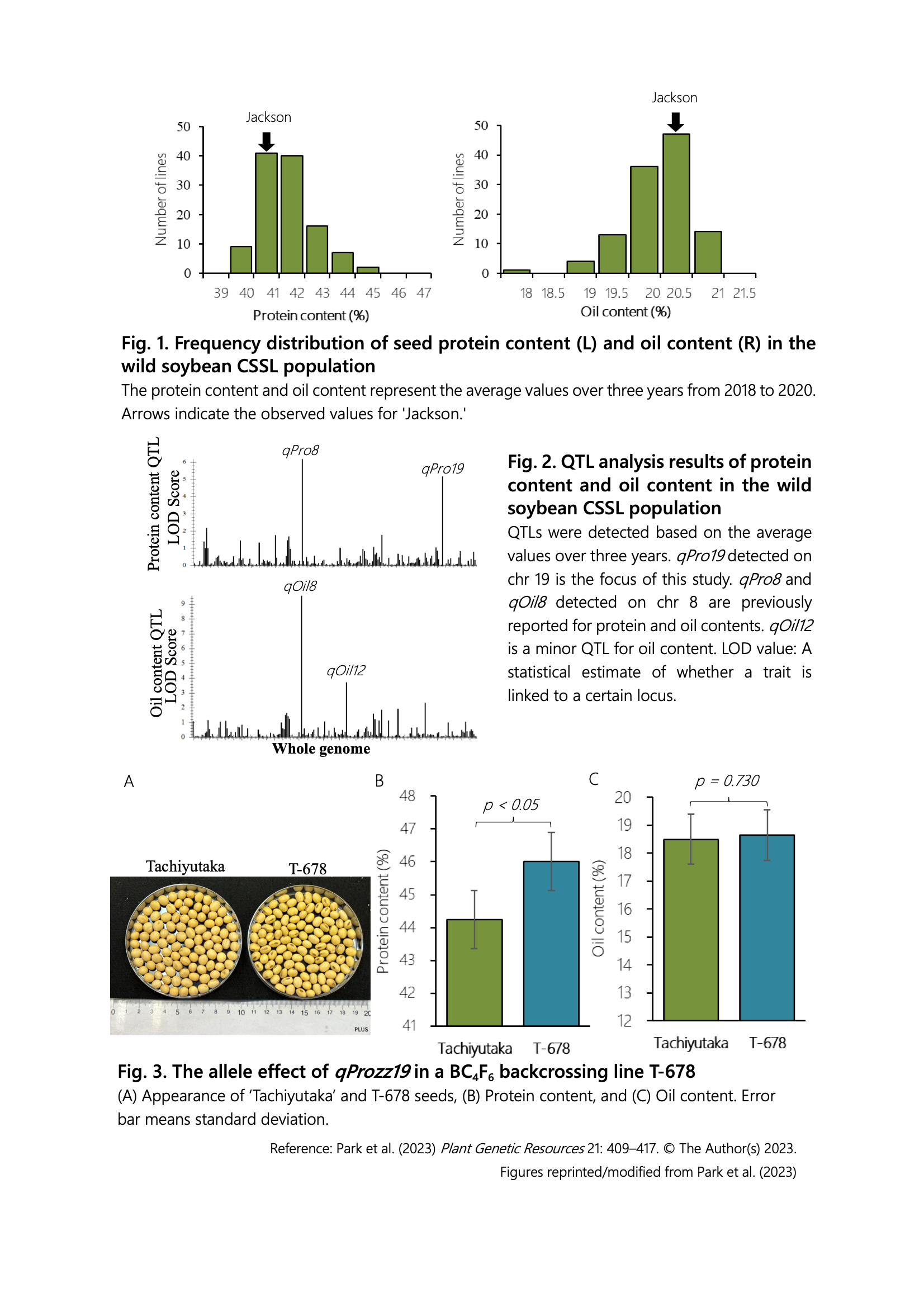A QTL allele from wild soybean enhances protein content without reducing the oil content
Related Research Project
Resilient crops
Description
Soybean, which contains approximately 40% protein and 20% oil, is one of the most important sources of protein and oil for human consumption, providing over 71% of the world's plant-based protein and more than 29% of the oil. Generally, soybean protein content shows a negative correlation with oil content, making it difficult to develop varieties with high protein and oil content. Therefore, it is necessary to identify new genes involved in soybean protein and oil content. Wild soybean, the ancestor of cultivated soybean, possesses higher seed protein content than cultivated varieties. Therefore, wild soybean is a valuable genetic resource that could enhance the protein content of cultivated varieties.To identify the genes responsible for increasing protein content in wild soybean, a population comprising 113 BC4F6 chromosome segment substitution lines (CSSL) was developed from a cross between soybean cultivar ‘Jackson’ and wild soybean accession JWS156-1. The CSSL population was cultivated in field conditions for 3 years (2018, 2019, and 2020), and the seeds harvested from each line were analyzed for protein and oil contents using the Infratec NOVA instrument. Additionally, quantitative trait locus (QTL) analysis was performed using 243 SSR markers. As a result, we identified 12 QTLs on eight chromosomes associated with seed protein, oil, and protein + oil contents. Among them, the wild soybean allele of protein QTL qPro19 located on chromosome 19 was confirmed to increase protein content without reducing oil content in soybean seeds. To validate the effect of qPro19, near-isogenic lines (NILs) for qPro19 were developed. Analysis of protein and oil contents showed that the wild soybean type NIL exhibited higher protein content compared to the cultivated soybean type NIL, but there was no significant difference in oil content. Furthermore, BC4 line T-678, which introduced the qPro19 allele of wild soybean into another soybean variety, ‘Tachiyutaka,’ showed enhanced seed protein content without reducing the seed oil content.
The wild soybean allele of the protein content QTL qPro19 identified in this study can be utilized as genetic material for developing soybean varieties with high levels of both protein and oil content, as well as for improving protein content in specific soybean varieties.
Figure, table
- Research project
- Program name
- Term of research
-
FY2018-2023
- Responsible researcher
-
Park Cheolwoo ( Biological Resources and Post-harvest Division )
Xu Donghe ( Biological Resources and Post-harvest Division )
- ほか
- Publication, etc.
-
Park et al. (2023) Plant Genet. Resour.-Charact. Util. 21: 409–417https://doi.org/10.1017/S1479262123000850
- Japanese PDF
-
2023_B01_ja.pdf742.49 KB
- English PDF
-
2023_B01_en.pdf1.19 MB
* Affiliation at the time of implementation of the study.

